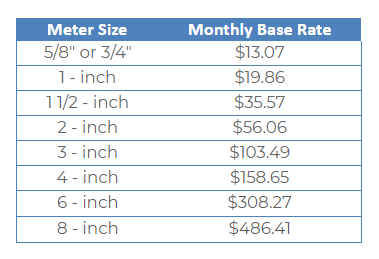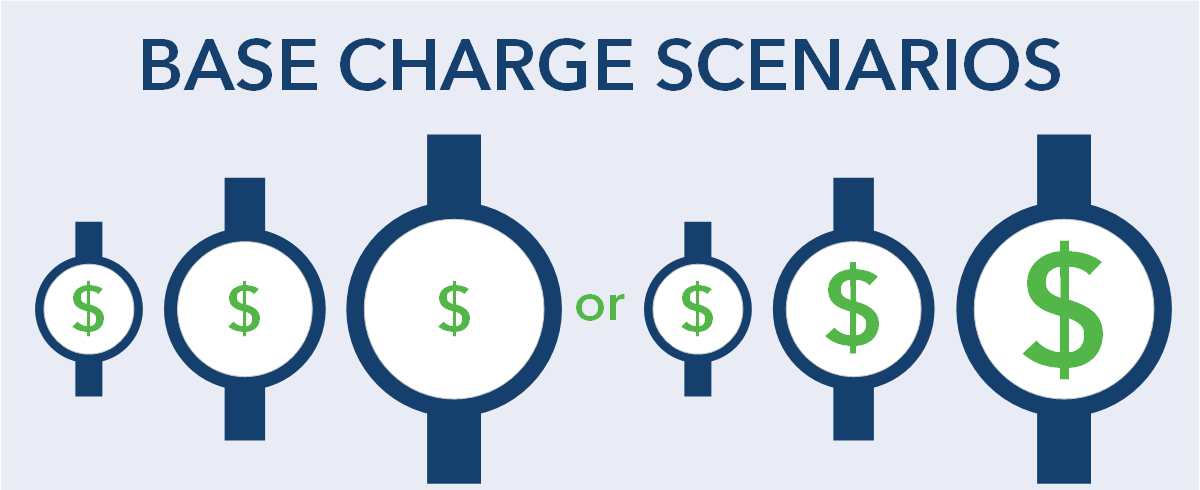I’ve written about base charges and the pros and cons of separating the base charge from the volumetric (usage) component of your rates on the utility bill. Today we look at how the base charge is assessed.
Rationale for a base charge
Unlike the volumetric component of a bill, which fluctuates month-to-month based on consumption, the base charge is a flat charge which remains the same, regardless of usage.
The base charge provides a way for the utility to recover the fixed cost of providing service to a customer, even if no consumption occurs.
What are some of these costs?
The first, and most obvious, cost to be considered is providing a meter to register the consumption. In addition to the meter, there are service lines feeding the meter and the cost to read the meter each billing period. And let’s not forget the cost of generating and mailing a utility bill and providing customer service when your customer has questions about their bill.
Larger meters equal more cost
Obviously, larger meters cost more to purchase than smaller meters. They also require larger service lines to supply them.
Also, depending on how your utility reads meters, larger meters can be more time consuming to read. Experience tells me that larger meters, especially those in meter pits, are the last to be changed out when transitioning to radio-read meters. This means these meters must continue to be read manually by a meter reader, incurring more labor costs than a radio-read meter. In some cases, to comply with confined space rules, two employees must go together to read the meter, incurring even more cost.
What’s the solution?
To deal with the additional cost of installing and maintaining larger meters, some utilities charge an increasing base charge, corresponding to the size of the meter. This way, they recover the cost of servicing customers with larger meters from those customers who require larger meters rather than spreading the cost across the entire customer base.
A quick Google search turned up this chart from the City of Davis, California showing how they charge their base rate according to meter size:




